
Article Summary: Historic Sites In Arizona
Historic Sites In Arizona. More Than Just Parks has 15 incredible must-see sites for you.
I’ve been to so many of these amazing places since retiring from teaching in 2018. Did I mention that I taught history? I spent a lifetime teaching about the history behind these momentous sites. Then I got to see them firsthand. And now I’m sharing the stories of these incredible places with you. It doesn’t get any better than that!
I’m going to give you my list of the Top 15 Historic Sites in Arizona that you’ll want to see. These are our top 10 sites which we will provide in reverse order. We’ve got amazing monuments, fascinating exhibits, historic museums, legendary figures and so much more.
To be clear, this list includes national park sites (as in sites managed by the National Park Service) as well as one national park. It also include sites not managed by the National Park Service. After all, we’re more than just parks!
Without further ado, let’s dive in!
Top 15 Historic Sites In Arizona
Table Of Contents: Historic Sites In Arizona
15. Lowell Observatory
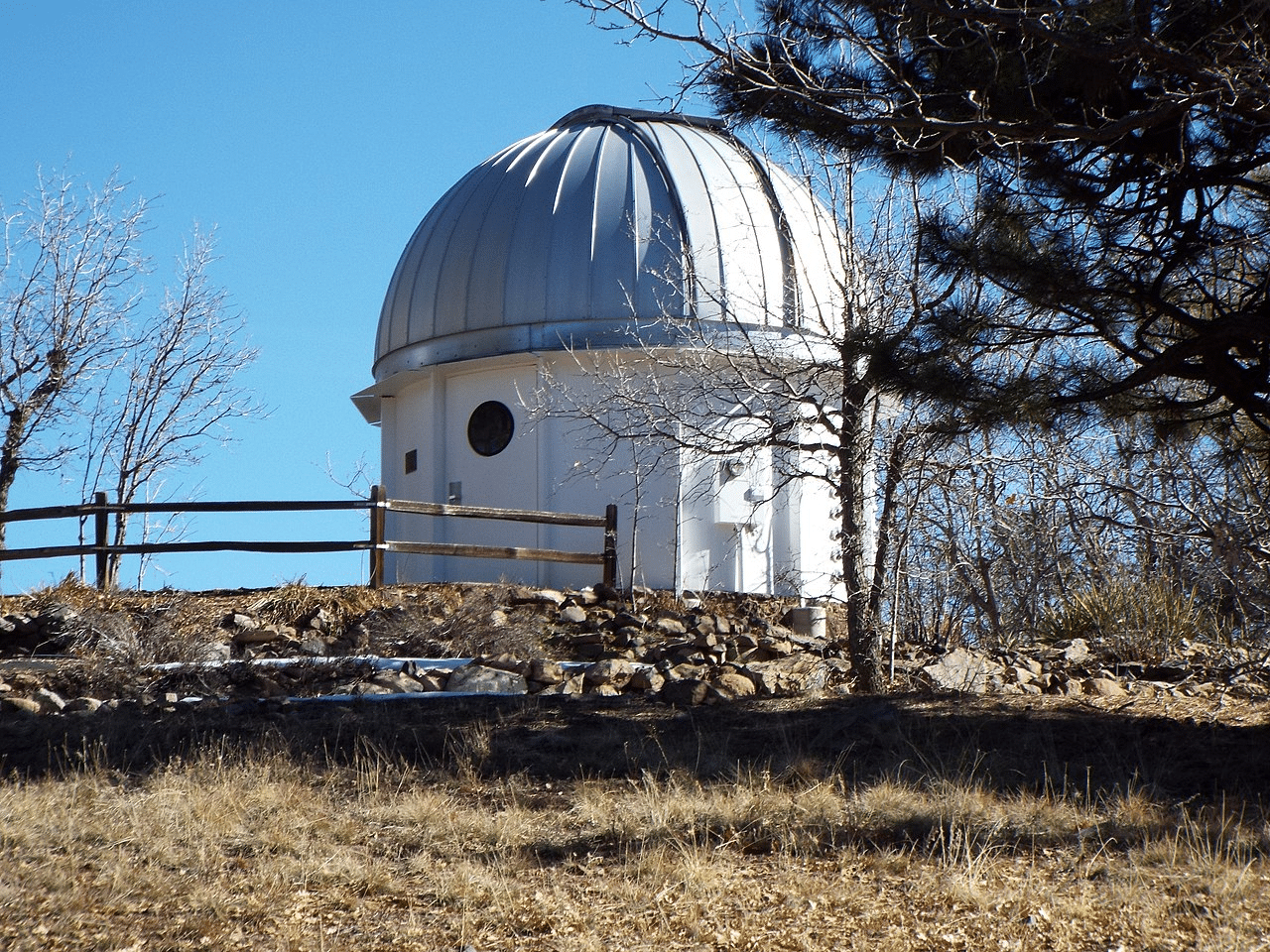
Welcome to Arizona! You’re in the Wild West. Everything from cliff dwellings to old mining towns, even the famous Meteor Crater, can be found in Arizona. So, whether you’re a history buff or just a big fan of wildlife, there are preserves and monuments for you to visit everywhere in the state.
And More Than Just Parks has put together an exciting list of the Top 15 Historic Sites In Arizona. And we’re kicking it off at #15 with Lowell Observatory.
Lowell Observatory is an astronomical research observatory located in Flagstaff, Arizona, that was founded in 1894 by Percival Lowell. Lowell was a wealthy businessman and amateur astronomer who was interested in the study of the planets, particularly Mars.
He established the observatory in Flagstaff, Arizona, because of the high altitude and clear skies, which provided ideal conditions for astronomical observation.
Lowell Observatory’s most notable achievement was the discovery of Pluto by Clyde Tombaugh in 1930. Tombaugh was hired by Lowell to search for a ninth planet, which Lowell believed existed beyond Neptune based on calculations of the orbits of Uranus and Neptune.
Tombaugh’s discovery of Pluto was the first discovery of a planet made by an astronomer using photographic techniques.
Lowell Observatory has continued to be an active research facility and it has made significant contributions to the field of astronomy. The observatory has been involved in research on the Solar System, galaxies, and cosmology.
It also has a rich history of astronomical discoveries, including the discovery of the first evidence of the expanding universe, known as the “Redshift” effect, and the discovery of the first binary stars.
Things To Do At Lowell Observatory
The Lowell Observatory features several exhibits and facilities for visitors to explore and learn about the history of the observatory and the discoveries made there.
The Rotunda Museum, built in 1916, serves as a library and collection area for artifacts, and features displays that discuss the Lowell family history and the discoveries made at the observatory. It also houses many different measuring tools including Thatcher’s Calculating Instrument.
The Putnam Collection Center and Lowell’s Lunar Legacy, are open to the public when the Rotunda Museum is closed. The Center highlights the Observatory’s history and features artifacts from Lowell’s past and other scientific discoveries.
The Giovale Open Deck Observatory is the newest addition to the Lowell observatory. It allows guests to learn astronomy during the day and night and features six telescopes, six plinths on the deck’s circumference, and an APS spectrum display.

14. Scottsdale’s Museum of the West
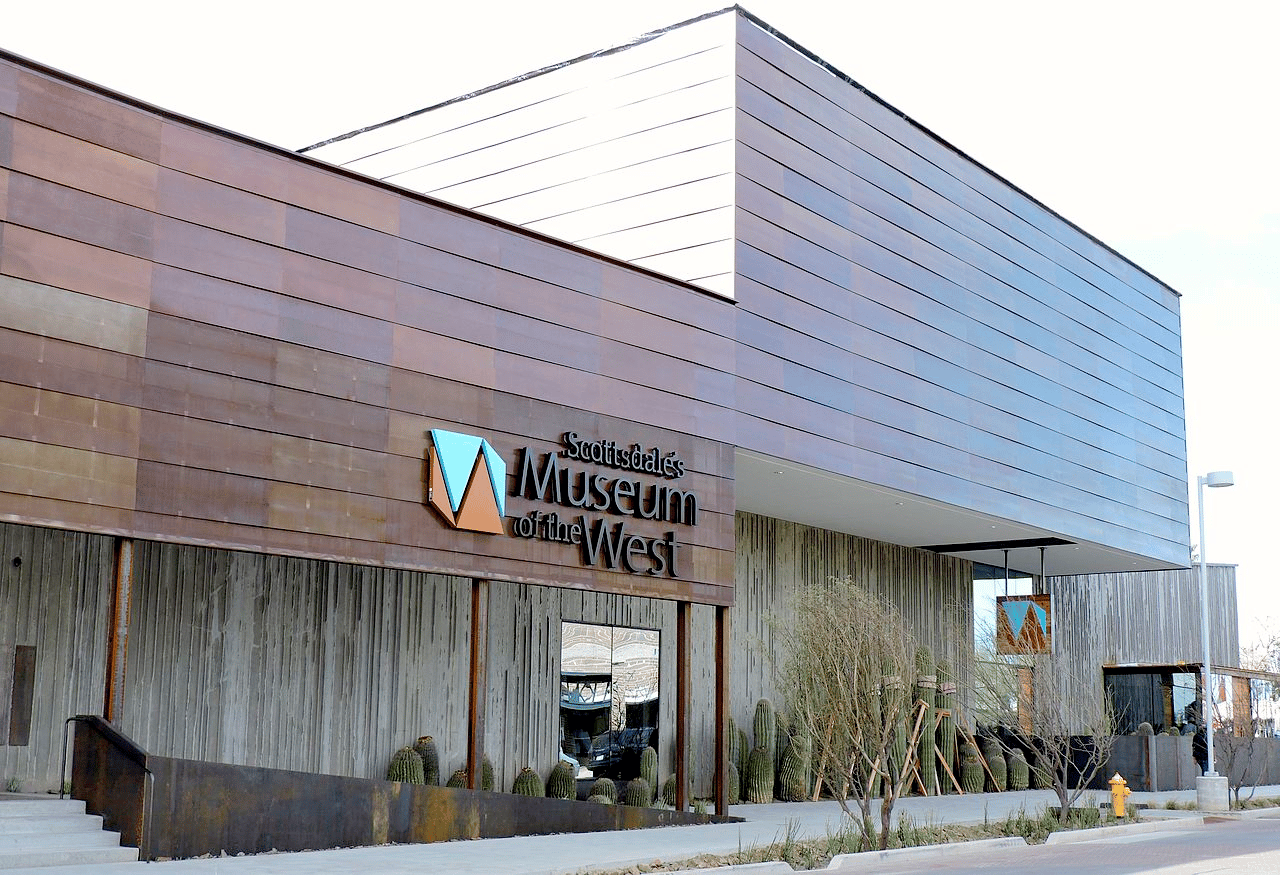
If you want to learn about the history of the west then come to Arizona. And, more specifically, check out our next site. At #14 on our list of the Best Historic Sites In Arizona is Scottsdale’s Museum of the West.
Scottsdale’s Museum of the West focuses on the history and culture of the American West. The museum was established in 2015, and it features a wide range of exhibits, artifacts, and educational programs related to the history, art, and culture of the American West.
The museum’s collection includes a wide range of artifacts and objects related to the American West, including Native American art and artifacts, cowboy gear, firearms, and other items related to the history of the American West.
The museum also features a variety of temporary and rotating exhibits that highlight different aspects of the American West, such as art, history, and culture.
Famous Artists Of The American West
One of the museum’s main focus is on the art of the American West, showcasing paintings, sculptures, and other works by some of the most famous artists of the American West, such as Frederic Remington and Charles M. Russell. The Museum also include artifacts from the first people of the West, including pottery, jewelry and other objects.
The museum also offers a variety of educational programs and events, such as lectures, tours, and workshops, which provide visitors with an in-depth understanding of the history, art, and culture of the American West.
The museum is open to the public and is a popular destination for history buffs, art enthusiasts, and those interested in the American West.
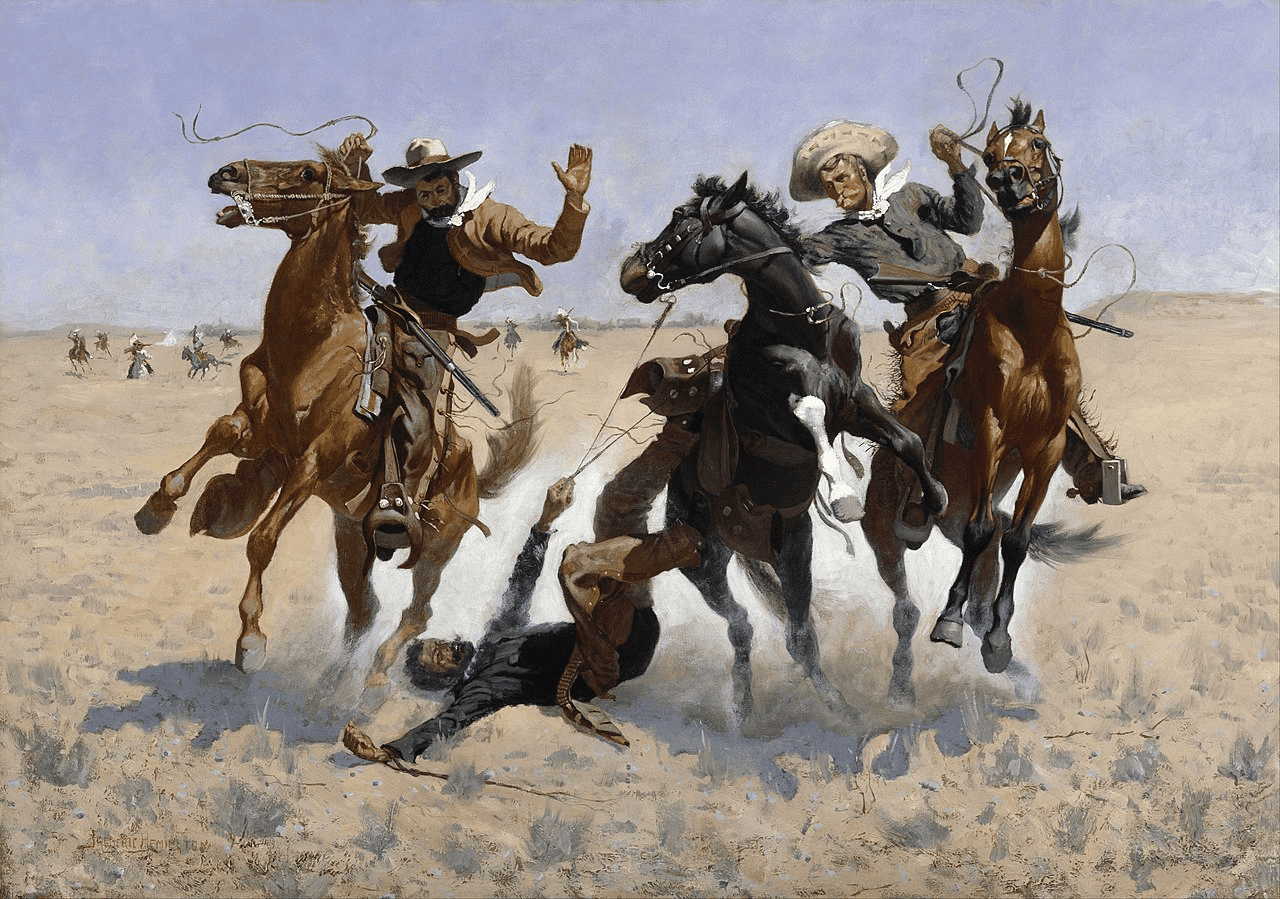
13. San Xavier del Bac
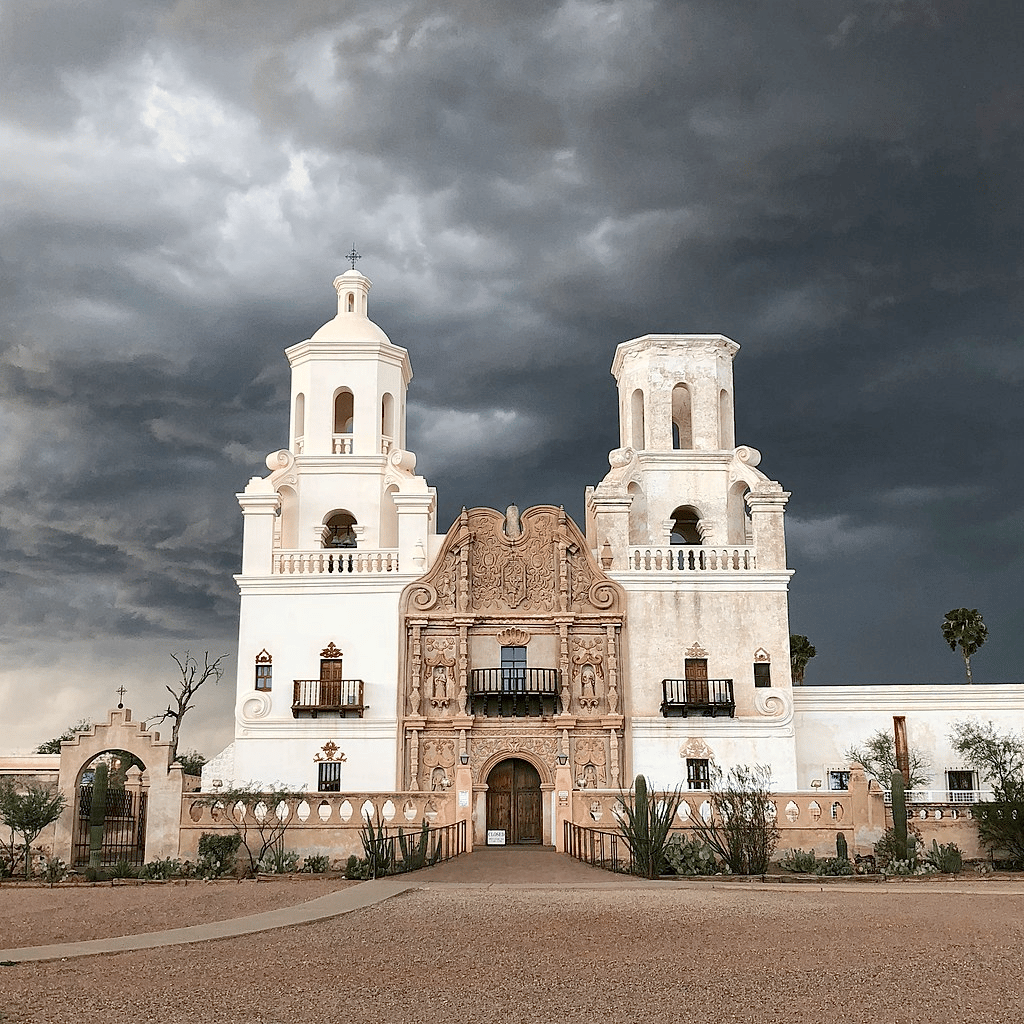
Our next historic site features a Catholic Mission established by the Spanish as part of their “civilizing mission.” At #13 on our list of the Best Historic Sites In Arizona is San Xavier del Bac.
San Xavier del Bac is located in the Sonoran Desert, about 10 miles south of Tucson, Arizona. The mission was founded in 1692 by Father Eusebio Kino, a Jesuit missionary who traveled throughout the region to establish missions and spread Christianity.
The original mission building was made of mud and wood, and was destroyed by Apache attacks in the early 18th century. It was rebuilt in 1783 by Franciscan missionaries, who used brick and stone to create a more permanent structure. The current mission building, which is still standing today, was completed in 1797.
The design of San Xavier del Bac is a unique blend of Spanish, Moorish, and Native American architectural styles, reflecting the diverse cultures of the region. The mission is known for its intricate decorations, including colorful frescoes and sculptures that depict scenes from the Bible and the lives of the saints.
It Served As A Center For Religious & Cultural Life
Throughout its history, San Xavier del Bac has served as a center for religious and cultural life in the region. It was an important stop for travelers and traders along the Camino Real, a network of trade routes that linked Mexico City with Santa Fe, New Mexico. The mission also provided education and healthcare services to the local community.
In the 19th century, the mission was temporarily abandoned during the Mexican-American War and the subsequent Gadsden Purchase, which transferred the land to the United States.
The mission was later restored in the 20th century, thanks in part to the efforts of a group of Franciscan friars who worked to preserve the building and its historic artifacts.
Today, San Xavier del Bac is a popular tourist destination and a functioning parish church. It remains an important symbol of the region’s rich history and cultural heritage, and continues to be a source of inspiration and spirituality for the people of Southern Arizona.
12. Pioneer Living History Museum
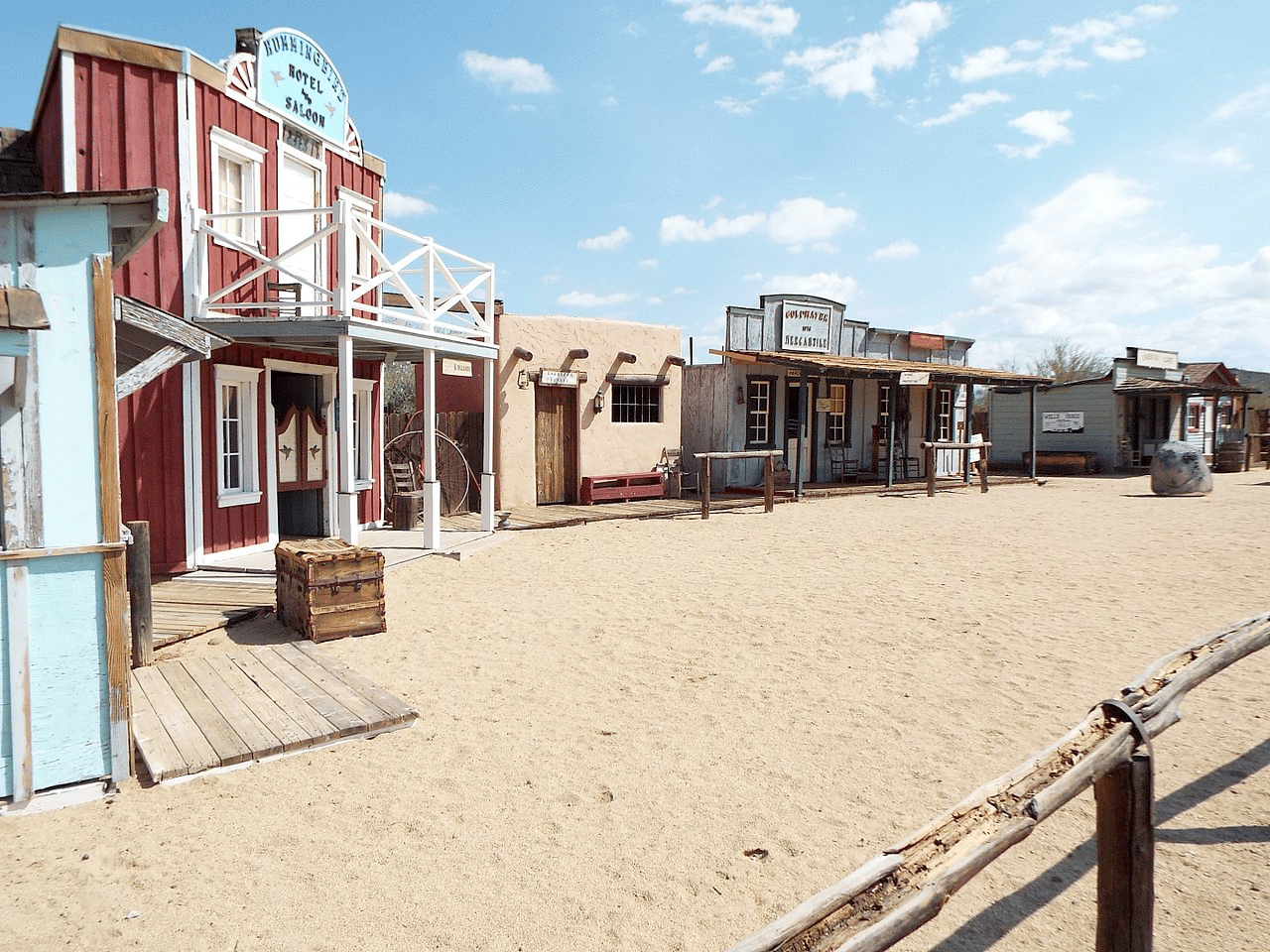
If you enjoy learning about the history of the American West then Arizona is one of the best possible places to visit. At #12 on our list of the Best Historic Sites In Arizona is the Pioneer Living History Museum.
The Pioneer Living History Museum is an outdoor museum in Arizona that aims to preserve and showcase the history of the American frontier. The museum features a collection of authentic pioneer and western buildings, including homes, a schoolhouse, a church, a blacksmith shop, and a jail.
Visitors can explore these structures and learn about the daily lives of pioneers through interactive exhibits, artifacts, and period-specific demonstrations. The museum also has a collection of vintage vehicles, farm equipment, and other tools and machines used by pioneers.
The museum also has living history programs, where costumed interpreters reenact the daily life of pioneers, giving visitors an opportunity to experience what life was like in the past.
It also has special events and activities throughout the year, such as blacksmithing and pottery workshops, cowboy skills demonstrations, and old-fashioned games and crafts.
The museum is a great destination for families, school groups, and history buffs interested in learning about the American frontier and the pioneering spirit.
11. Tombstone Historical District
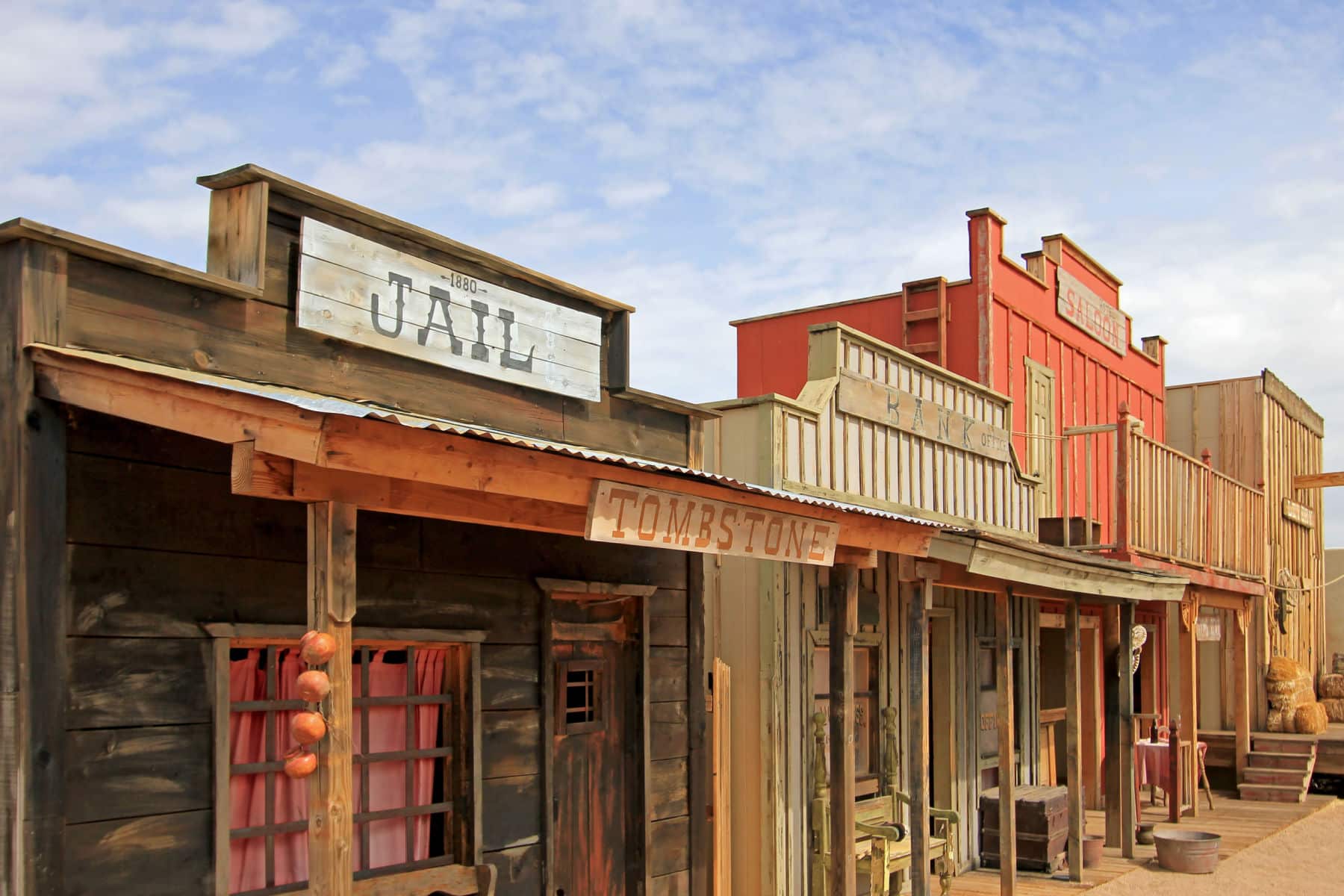
While we’re on the topic of the American West, one of our favorite sites is a place where the most famous gunfight in American history happened. At #11 on our list of the Best Historic Sites In Arizona is the Tombstone Historical District.
Tombstone Historical District is located in the town of Tombstone, Arizona. The district is known for being the site of the famous Gunfight at the O.K. Corral.
Gunfight At The O.K. Corral
The Gunfight at the O.K. Corral was a legendary shootout that took place on October 26, 1881. The incident involved a confrontation between lawmen and a group of outlaws who were suspected of stealing and committing other crimes in the area.
The lawmen involved in the shootout were Wyatt Earp, his brothers Virgil and Morgan Earp, and their friend Doc Holliday. The outlaws were a group known as the Cowboys, which included Ike and Billy Clanton, Tom and Frank McLaury, and Billy Claiborne.
The shootout took place in a narrow alley near the O.K. Corral, a local saloon and gambling hall. According to some accounts, the Earps and Holliday confronted the Cowboys and demanded that they surrender their weapons. The outlaws refused, and a gunfight ensued.
The shootout lasted only about 30 seconds and involved several exchanges of gunfire. When it was over, three members of the Cowboys were dead (Ike and Billy Clanton, and Tom McLaury) and two of the Earps (Morgan and Virgil) were wounded. Doc Holliday was also grazed by a bullet.
The Gunfight at the O.K. Corral became a legendary event in American history, and it has been the subject of numerous books, movies, and other works of popular culture.
The incident has been portrayed in various ways over the years, with some accounts portraying the Earps and Holliday as heroic lawmen, while others have depicted them as ruthless vigilantes.

See The Place Where It All Happened
The district includes a number of buildings and sites that are associated with the history of the town and the gunfight, including the O.K. Corral itself, as well as the courthouse, the bird cage theater, and several other buildings and sites.
The district is also home to several museums and exhibits that highlight the history of the town, including the Tombstone Epitaph Museum, which is dedicated to the history of the newspaper that was published in Tombstone during the late 19th century.
Tombstone Historical District is a popular tourist destination. It’s a great place to learn about the history of the American West and the Wild West era.
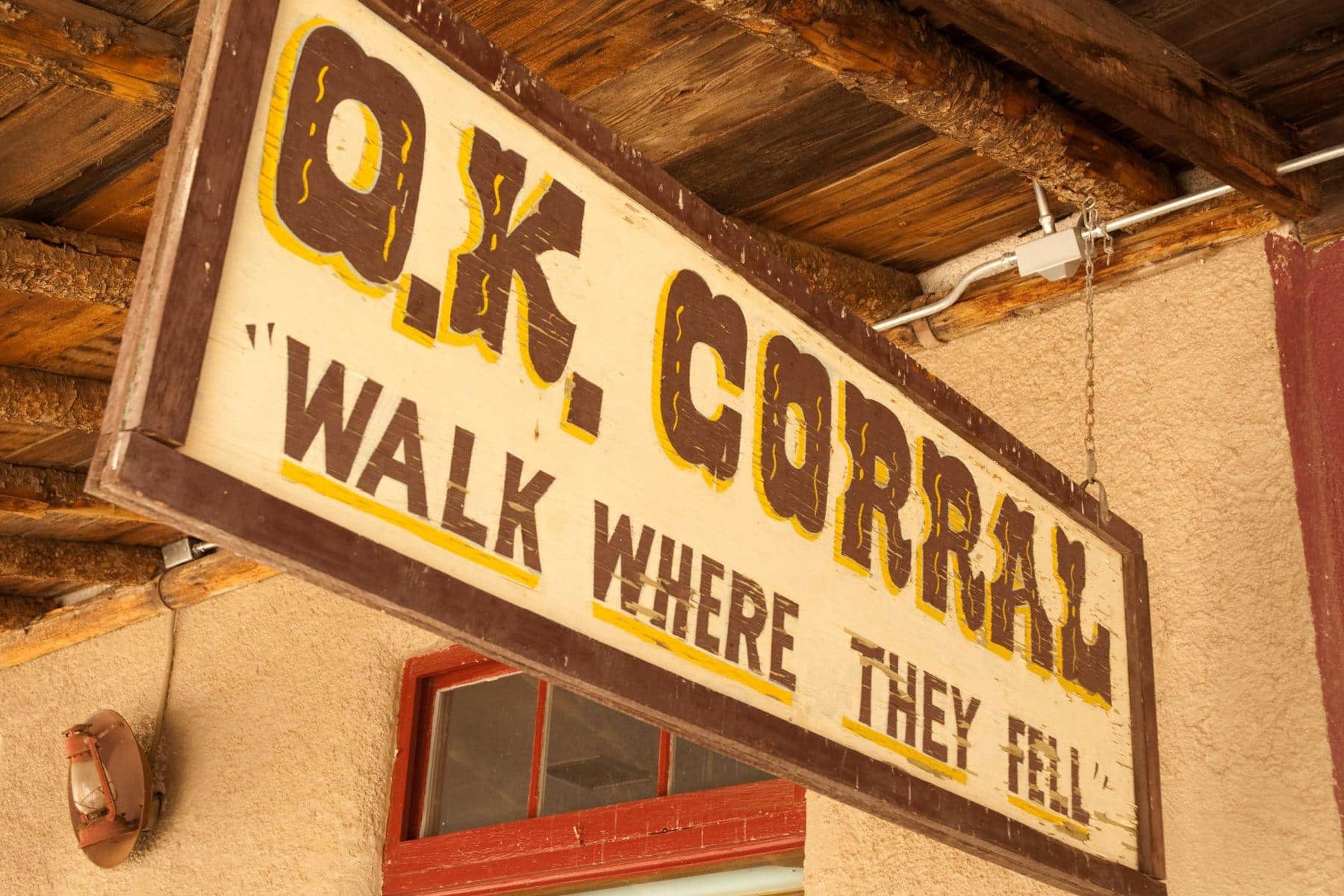
Top 10 Historic Sites In Arizona
10. Wupatki National Monument

We’re on to the Top 10 Historic Sites In Arizona which are among some of our favorite national park sites. At #10 is the Wupatki National Monument.
Wupatki National Monument is a Native American heritage that contains ancient ruins of the Sinagua people, a pre-Columbian civilization who lived in the area from about 500 AD to 1250 AD.
The main feature of the monument is Wupatki Pueblo, a large multi-story masonry building with rooms, plazas, and ball courts.
The monument also contains several other smaller pueblos and dwellings scattered throughout the landscape, as well as petroglyphs and pictographs created by the Sinagua people.
Wupatki National Monument provides insights into the lives and culture of the Sinagua people and the unique ecological and geological features of the surrounding area.
RELATED: THE ULTIMATE ARIZONA ROAD TRIP
9. Hubbell Trading Post National Historic Site Monument
Our next site is a historic trading post located in northeastern Arizona on the Navajo Nation. At #9 on our list of the Best Historic Sites In Arizona is the Hubbell Trading Post National Historic Site.
The site was established in 1878 by John Lorenzo Hubbell, a trader of Hispanic and European descent, and it played a significant role in the economic and cultural history of the Navajo people.
The trading post served as a center for trading goods and livestock between the Navajo people and Anglo-American traders. The post also served as a cultural center where Navajo people gathered to trade, share stories and news, and socialize.
The main building of the trading post, which was built in 1883, still stands today and serves as a museum.
The museum exhibits the trading post’s history, the life of the Navajo people, and the history of the trading post’s owners, the Hubbell family.
See A Collection Of Traditional Navajo Items
The exhibits include a collection of Navajo rugs, baskets, jewelry, and other traditional crafts, as well as photographs, documents, and other historical artifacts.
The site also features a reconstructed Navajo hogan, a traditional Navajo home, and a visitor center with a bookstore and information about the site’s history and the Navajo Nation.
The Hubbell Trading Post National Historic Site is a unique destination that offers visitors a glimpse into the history and culture of the Navajo people and the American West.
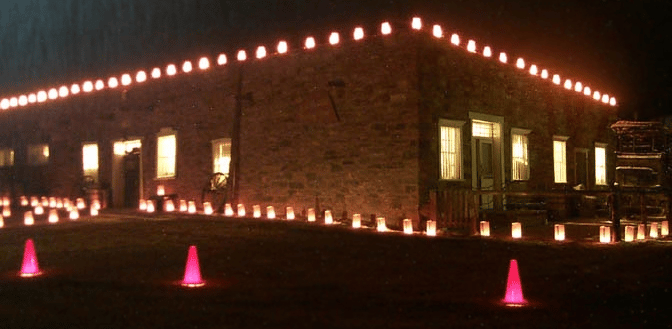
CHECK OUT: THESE 24 EPIC ARIZONA NATIONAL PARKS WILL BLOW YOUR MIND
8. Tumacácori National Historical Park
If you like colonial missions then you’ll love our next site. Our #8 on our list of the Best Historic Sites In Arizona is the Tumacácori National Historical Park, which preserves the ruins of the Mission San José de Tumacácori, a Spanish colonial mission established in the late 1700s.
The mission was one of several built in the region to convert the indigenous people to Catholicism and establish Spanish control over the area. The mission was active until the mid-1800s, after which it fell into disrepair.
In the late 1800s, the site was acquired by the United States government and became Tumacácori National Monument, which was later redesignated as a National Historical Park.
Today, visitors to the park can explore the ruins of the mission church, convento, and other buildings, as well as learn about the history of Spanish colonial missions and the impact they had on indigenous communities in the American Southwest.
CHECK OUT: 10 EPIC NATIONAL PARKS NEAR PHOENIX YOU’LL LOVE
Things To Do At Tumacácori National Historical Park
Visitors enter Tumacácori National Historical Park through the Tumacácori Visitor Center. The visitor center offers a 15 minute video, an excellent museum, and a bookstore.
A self-guided interpretive tour booklet, “In the Footprints of the Past,” is available for loan or purchase in the bookstore.
Guided tours are available at 11:00 and 2:00 January through March, and may be available at other times and seasons. Special tours, such as guided walks to the Santa Cruz River, may also be available.
7. Tonto National Monument

Now if you’re someone who has never experienced a cliff dwelling then you’re in for a real treat because visitors to our next site will have have the opportunity to marvel at two Salado-style cliff dwellings. At #7 on our list of the Best Historic Sites In Arizona is Tonto National Monument.
You can see colorful pottery, woven cotton cloth, and other artifacts tell a story of people living and using resources from the northern Sonoran Desert from 1250 to 1450 CE.
Tonto was established in 1907. It’s mission is to protect several cliff dwelling sites and numerous smaller archeological sites scattered throughout the highlands and alluvial plains within the Tonto Basin, Arizona.
Things To Do
Here are some things you can do when visiting Tonto National Monument:
- Explore the cliff dwellings: The highlight of Tonto National Monument is the ancient cliff dwellings that are open to the public. These structures were built by the Salado people in the 13th century and offer a fascinating glimpse into the past.
- Hike the trails: Tonto National Monument has several hiking trails that lead visitors through the Sonoran Desert landscape. The Lower Cliff Dwelling Trail is a 1.5-mile round-trip hike that takes you to the main cliff dwelling, while the Upper Cliff Dwelling Trail is a more strenuous 3-mile round-trip hike that offers stunning views of the surrounding mountains.
- Attend a ranger-led program: Tonto National Monument offers a variety of ranger-led programs, including guided hikes, talks, and demonstrations. These programs are a great way to learn more about the history and ecology of the area.
- Birdwatching: Tonto National Monument is home to a variety of bird species, including Gambel’s quail, Gila woodpeckers, and cactus wrens. Bring your binoculars and see how many you can spot.
- Picnic: Tonto National Monument has a picnic area where you can enjoy a meal surrounded by the beautiful Sonoran Desert scenery.
- Photography: The dramatic cliff dwellings, towering saguaros, and rugged mountains make Tonto National Monument a photographer’s paradise. Bring your camera and capture some amazing shots.
- Camping: Tonto National Monument has a small campground that is open from October through April. Reservations are required, but it’s a great way to experience the park after the day visitors have left.
RELATED: 10 AMAZING NATIONAL PARKS NEAR TUCSON YOU’LL LOVE
6. Old Spanish National Historic Trail
.jpg)
Trade networks are as old as civilization itself. Merchants and traders sent goods from New Mexico to Los Angeles in the 18th and 19th centuries. Our next historic site is a case in point. At #6 on our list of the Best Historic Sites In Arizona is the Old Spanish National Historic Trail.
It was the Mexican trader Antonio Armijo who led the first commercial caravan from Abiquiú, New Mexico to Los Angeles in late 1829. Over the next twenty years, Mexican and American traders continued to use routes similar to the one he pioneered.
This trail network was a combination of the indigenous footpaths, early trade and exploration routes, and horse and mule routes which became known collectively as the “Old Spanish Trail.”
Today numerous programs and activities are available at sites and in communities along the Trail.
CHECK OUT: LIST OF 128 BEST US NATIONAL MONUMENTS RANKED
The Top 5 Historic Sites In Arizona
5. Navajo National Monument
We’re on to our Top 5 Historic Sites In Arizona. Our next historic site preserves three large pueblos dating to the 13th century C.E., as well as the archaeological evidence that documents human use in the region over the past several thousand years. Welcome to Navajo National Monument.
Navajo National Monument is located in northeastern Arizona, on the Navajo Nation. The monument was established in 1909 to protect and preserve three of the largest and most well-preserved cliff dwellings sites of the ancient Puebloan people, also known as the Anasazi.
The three sites, Betatakin, Keet Seel, and Inscription House, feature well-preserved architecture and rock art, and offer a glimpse into the lives of the Puebloan people who lived there more than 700 years ago.
The monument’s visitor center features exhibits on the history and culture of the Puebloan people and the Navajo Nation, and offers ranger-led tours to the cliff dwellings sites.
Check Out The Amazing Cliff Dwelling Sites
Visitors can also hike the trails that lead to the cliff dwellings sites, including the Betatakin trail, which is a moderate 3-mile round trip hike that leads to the Betatakin ruins. The Keet Seel trail, and the Inscription House trail are longer and more strenuous, but offer a more in-depth look at the ruins.
The monument also offers guided ranger tours, a campground and picnic areas.
The Navajo National Monument offers an opportunity to learn about the ancient Puebloan people, the Anasazi, and the Navajo Nation, and to explore the well-preserved ruins of the ancient cliff dwellings sites.
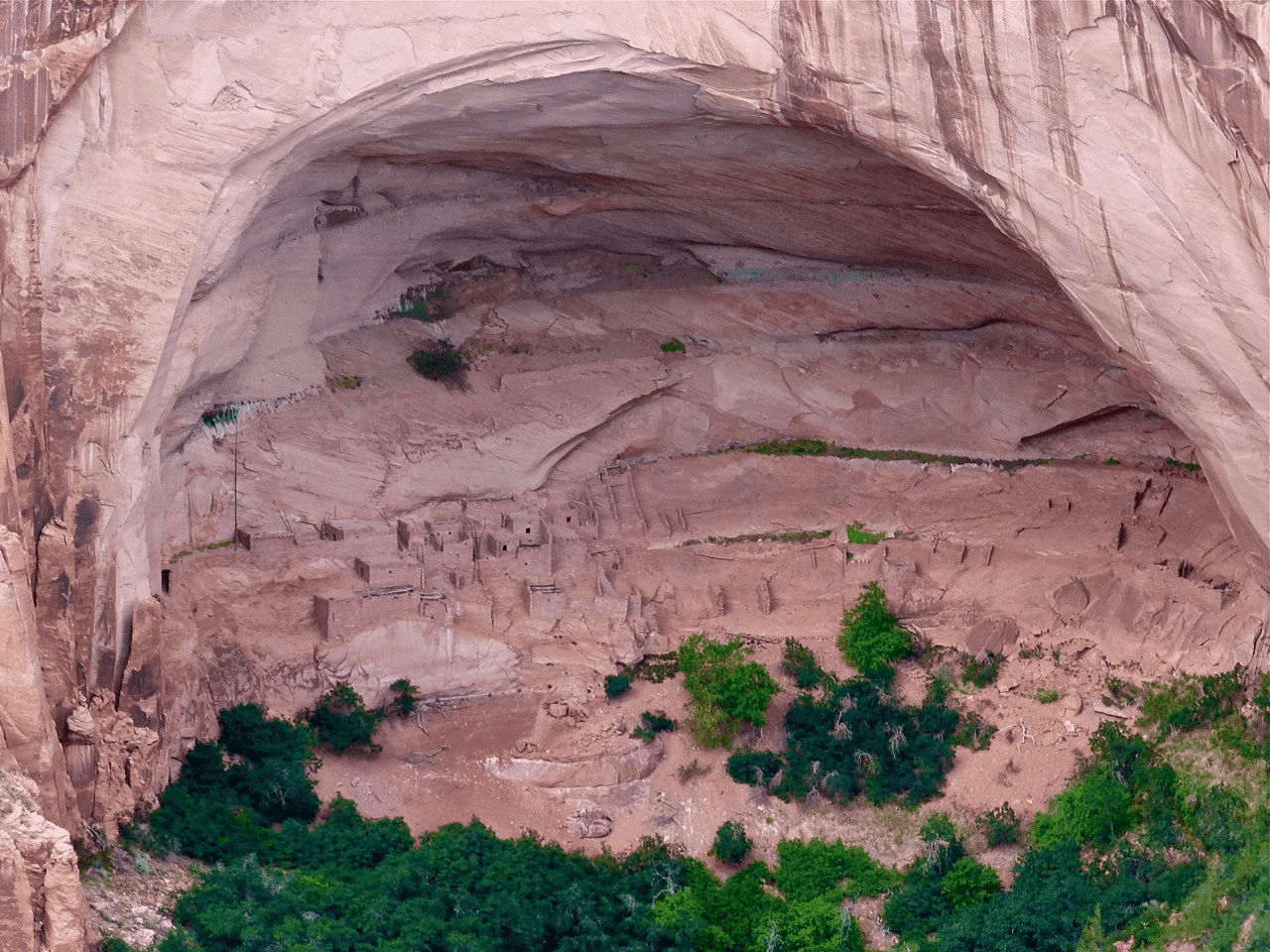
CHECK OUT: 10 BEST REVOLUTIONARY WAR SITES IN AMERICA
Walk The Ground Trod By Native Americans Hundreds Of Years Ago

Imagine walking the same ground trod by Native Americans centuries ago. There are three self-guided trails. They are:
- The Sandal Trail which is a 1.3 mile round-trip paved trail to the Betatakin Cliff Dwelling overlook.
- The Aspen Trail which is a 0.8 mile steep round-trip nature trail that leads to an overlook of a relict forest on the canyon floor.
- The Canyon View Trail which is a 0.8 mile round-trip canyon rim trail that leads to the park’s historic ranger station and provides views of the canyon.
There are also ranger-guided cliff-dwelling tours available at Betatakin and Keet Seel.
4. Fort Bowie National Historic Site

We’re on to our “Final Four” historic sites. At #4 is a place that was established as a military fort in 1862 to protect settlers and travelers along the Butterfield Overland Mail route from attacks by the Chiricahua Apache tribe. It’s the Fort Bowie National Historic Site.
Fort Bowie National Historic Site is located in southeastern Arizona. It preserves the remains of a 19th-century military outpost that played a key role in the conflict between the US Army and the Apache people.
The fort was established in 1862 by the California Column, a Union Army force that was sent to the region to prevent Confederate troops from gaining control of the Southwest. The fort was named after Colonel George Washington Bowie, who was killed in a battle with the Apache in 1861.
In the years following its establishment, Fort Bowie became an important military outpost that was tasked with protecting settlers, miners, and travelers from Apache raids. The fort was also involved in several military campaigns against the Apache, including the Apache Wars of the 1870s.
The Bascom Affair
One of the most significant events in the history of Fort Bowie was the Bascom Affair, which occurred in 1861. In this incident, a group of Apache warriors kidnapped a young boy and a herd of cattle from a nearby ranch. In response, Lieutenant George Bascom led a group of soldiers to the Apache camp, where they demanded the return of the boy and the cattle.
The Apache denied any involvement in the raid and refused to comply with the demands. The soldiers then opened fire on the Apache camp, killing several people, including the son of the Apache chief Cochise. This incident marked the beginning of a long and bloody conflict between the Apache and the US Army.
Things To Do
Visitors can explore the remains of the fort, including the officers’ quarters, the hospital, and the guardhouse. The site also features a visitor center with exhibits on the history of the fort and the Apache Wars, as well as a self-guided trail that leads through the fort’s ruins and the surrounding area.
The trail also offers visitors the opportunity to explore the Chiricahua Apache culture and the natural beauty of the area.
Fort Bowie National Historic Site offers visitors an opportunity to learn about the history of the Apache Wars and the role of the U.S. Army in the American West. It also offers visitors the opportunity to explore the natural beauty of the area and the Chiricahua Apache culture.
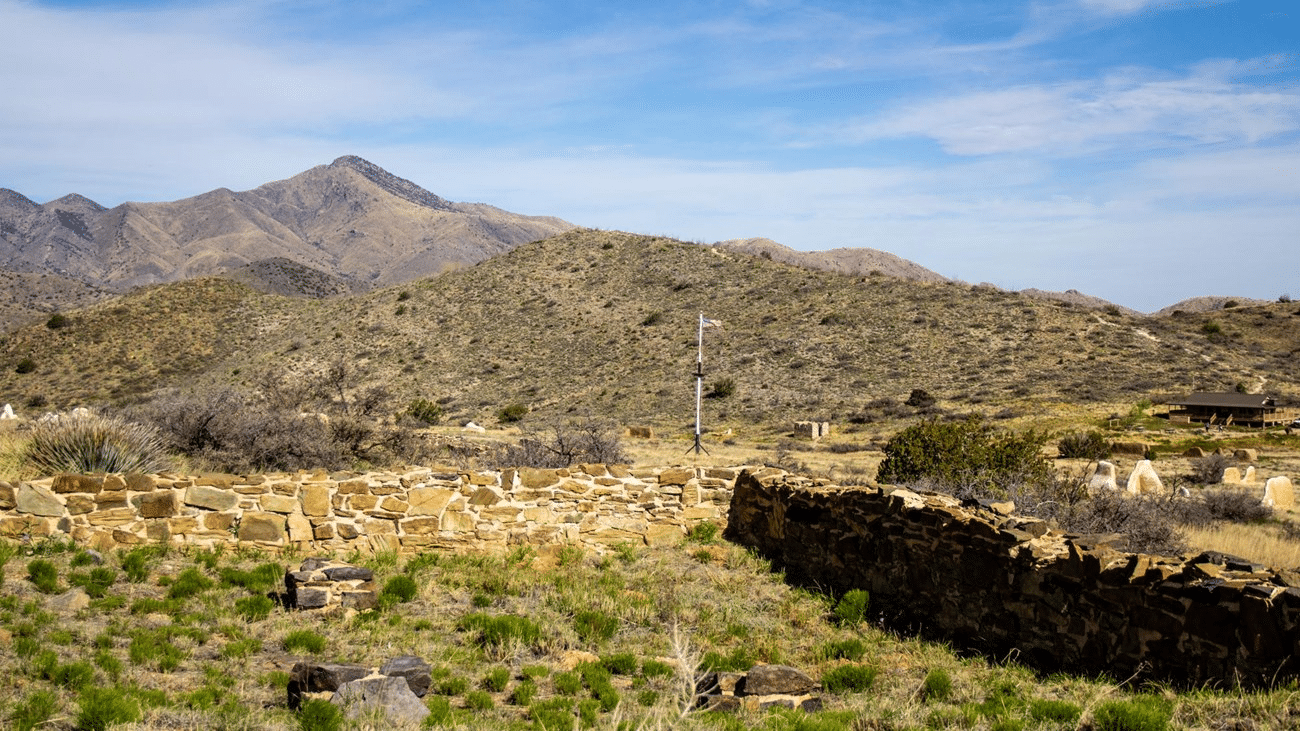
CHECK OUT: 10 BEST CIVIL WAR SITES IN AMERICA
3. Coronado National Memorial

At #3 on our list of the Best Historic Sites In Arizona is a site which commemorates the Coronado Expedition of 1540-1542 and its lasting impacts on the culture of northwest Mexico and the southwestern United States. It’s the Coronado National Memorial.
The Coronado National Memorial is a national memorial located in southern Arizona, near the town of Sierra Vista.
The memorial was established in 1952 to commemorate the expedition of Francisco Vázquez de Coronado, a Spanish conquistador who led an expedition into the American Southwest in the 1540s in search of the legendary Seven Cities of Gold. The memorial is located on the site where Coronado and his expedition first set foot in what is now the United States.
It includes a visitor center with exhibits on the history of Coronado’s expedition and the American Southwest, as well as a bookstore and a picnic area.
Visitors can hike several trails that offer beautiful views of the surrounding landscape, including the Coronado Peak Trail, which leads to the summit of Coronado Peak and offers panoramic views of the surrounding area. The memorial also offers guided tours, ranger-led programs, and special events throughout the year.
The Coronado National Memorial is a great place to learn about the history of the American Southwest and the expedition of Francisco Vázquez de Coronado, and to explore the natural beauty of the area.
Things To Do
A good place to begin your visit is at the visitor center. There’s a film which provides a brief history of the expedition.
From there you’ll have an opportunity to see the magnificence of the lands once visited by Coronado only you will be able to travel in greater comfort than he did.
The Montezuma Pass Overlook & Scenic Drive is a great place to begin your expedition. It will take you to an elevation of 6,575 feet. The pass offers sweeping views to the east of the San Pedro River Valley and to the west over the San Rafael Valley.
CHECK OUT: 25 BUCKET-LIST FAMOUS LANDMARKS IN AMERICA (MUST-SEE)
2. Casa Grande National Monument

We’re on to the final two historic sites and, in the runner-up spot at #2 is a place where you can explore the history and stories of an extended network of communities and irrigation canals.
An Ancestral Sonoran Desert People’s farming community and “Great House” is there too! Welcome to Casa Grande National Monument.
Casa Grande is a historic site located in Coolidge, Arizona. The monument preserves the remains of an ancient Hohokam village, including a large four-story structure known as the “Great House.”
The Great House is believed to have been built between 1150 and 1300 AD and is one of the largest and most complex prehistoric structures in North America.
Things To Do
Here are some things to do when visiting Casa Grande Ruins National Monument:
- Explore the Casa Grande: The centerpiece of the monument is the Casa Grande, a four-story adobe structure that was built by the Hohokam people in the 14th century. Visitors can take a guided tour or explore the ruins on their own.
- Attend a ranger-led program: Casa Grande Ruins National Monument offers a variety of ranger-led programs, including guided tours, talks, and demonstrations. These programs are a great way to learn more about the history and culture of the Hohokam people.
- Walk the trails: The monument has several hiking trails that offer visitors the chance to explore the surrounding desert landscape. The Desert View Trail is an easy 0.5-mile loop that offers stunning views of the Casa Grande and the surrounding mountains.
- Picnic: Casa Grande Ruins National Monument has a picnic area where visitors can enjoy a meal surrounded by the beautiful desert scenery.
- Visit the museum: The monument’s visitor center has a museum with exhibits on the history and culture of the Hohokam people, as well as the archaeology of the Casa Grande site.
- Birdwatching: The monument is home to a variety of bird species, including Harris’s hawks, Gambel’s quail, and great horned owls. Bring your binoculars and see how many you can spot.
- Photography: The Casa Grande ruins, desert landscape, and beautiful skies make Casa Grande Ruins National Monument a photographer’s paradise. Bring your camera and capture some amazing shots.
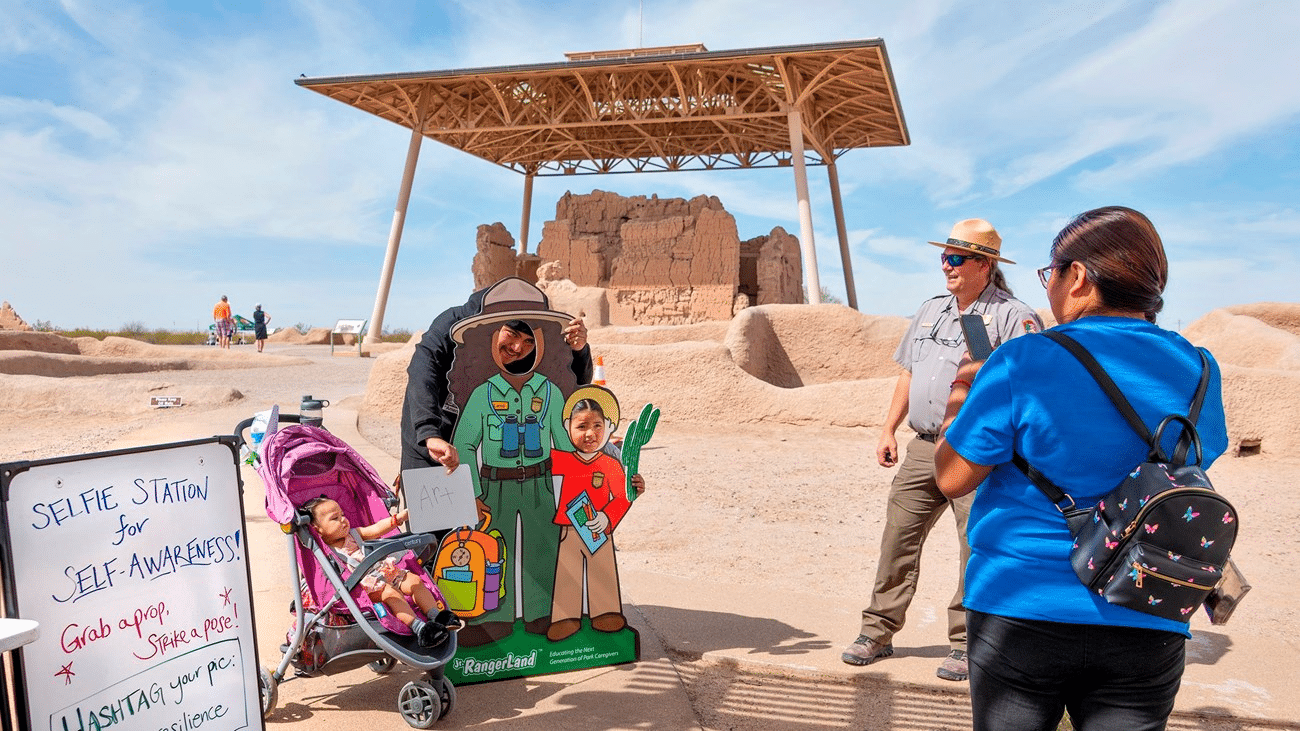
1. Grand Canyon
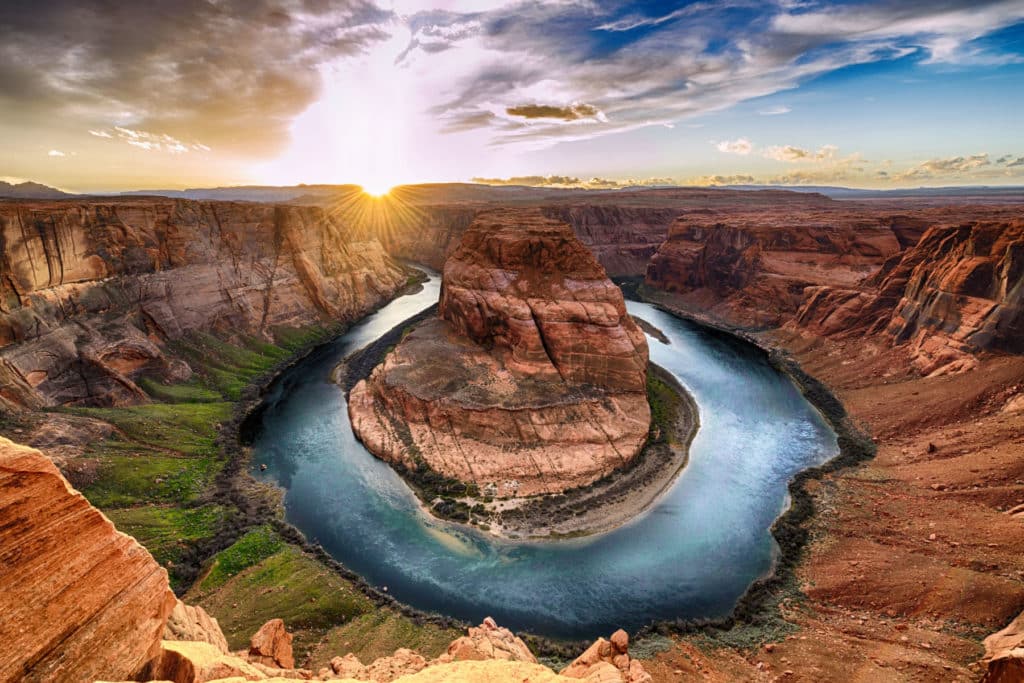
Drumroll please. As the #1 Historic Site In Arizona, More Than Just Parks has selected Grand Canyon National Park. We may be More Than Just Parks, but sometimes we’re just parks and we couldn’t think of a better way to conclude our list of the Best Historic Sites In Arizona than by concluding with one of the best national parks in the world.
Grand Canyon National Park covers over 1.2 million acres and is home to the famous Grand Canyon, a massive gorge carved by the Colorado River over millions of years.
The Grand Canyon is known for its deep, colorful layers of rock and its vast size, with a length of 277 miles and a width of up to 18 miles. The park also includes several other natural features, such as deserts, forests, and plateaus, as well as a diverse array of plant and animal life.
The park is open to the public for activities such as hiking, camping, and sightseeing. There are several viewpoints along the South and North Rim of the canyon, where visitors can take in panoramic views of the canyon.
Guided Tours, Ranger-Led Programs & Scenic Drives
It also offers guided tours, ranger-led programs and a scenic drive along the Desert View Drive, where visitors can stop at multiple overlooks and learn about the park’s geology, human history, and natural resources.
The park offers a variety of hiking trails, including the popular Bright Angel Trail, which descends into the canyon, and the Rim Trail, which offers a scenic walk along the rim of the canyon.
It’s also home to the Havasupai and Hualapai tribes, and visitors can take guided tours to learn about the tribes’ culture and history.
The park is open year-round, but certain areas may be closed or have limited access during the winter months due to snow.
Grand Canyon National Park is one of the most visited national parks in the United States and a UNESCO World Heritage Site.
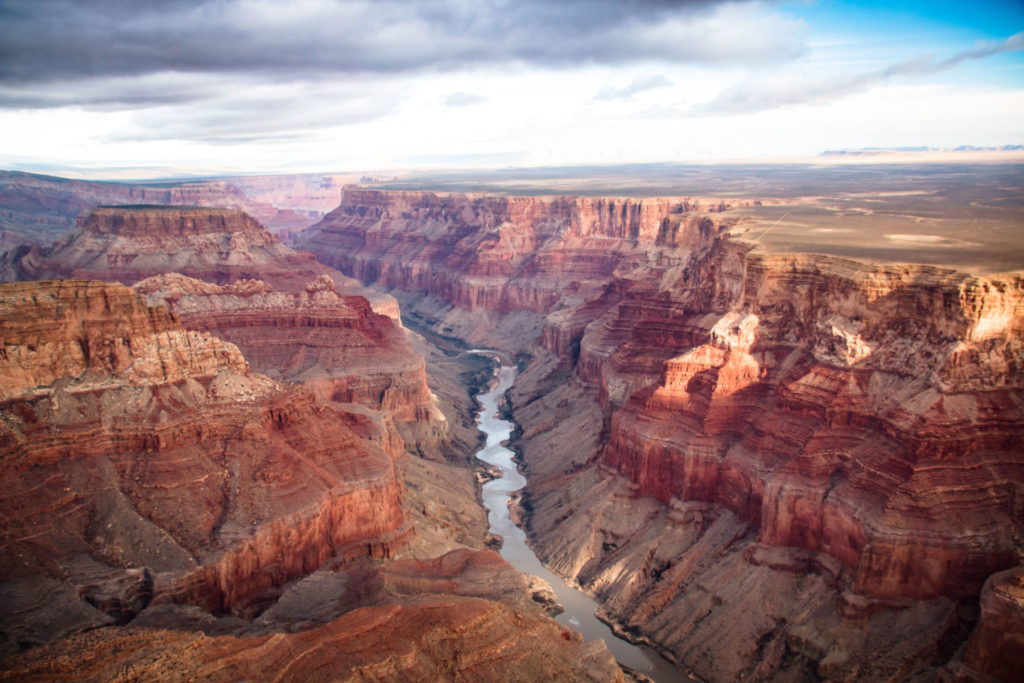
Things To Do
The Grand Canyon National Park offers a range of activities for visitors:
- Hiking: There are many trails for all levels of difficulty, including the popular South Kaibab and Bright Angel trails.
- Scenic Drives: Take a drive along Desert View Drive or Hermit Road for scenic views of the canyon.
- River Rafting: Experience the thrill of rafting through the rapids of the Colorado River.
- Mule Rides: Explore the canyon on horseback with guided mule trips.
- Camping: There are several campgrounds within the park for those who want to spend the night under the stars.
- Wildlife Watching: Keep an eye out for the park’s diverse wildlife, including mule deer, bighorn sheep, and numerous bird species.
- Ranger Programs: Attend ranger-led walks, talks, and campfire programs to learn more about the park’s history, geology, and wildlife.
- Guided Tours: Take a guided tour by bus, van, or helicopter for a unique perspective on the park.
- Stargazing: With minimal light pollution, the Grand Canyon offers excellent stargazing opportunities.
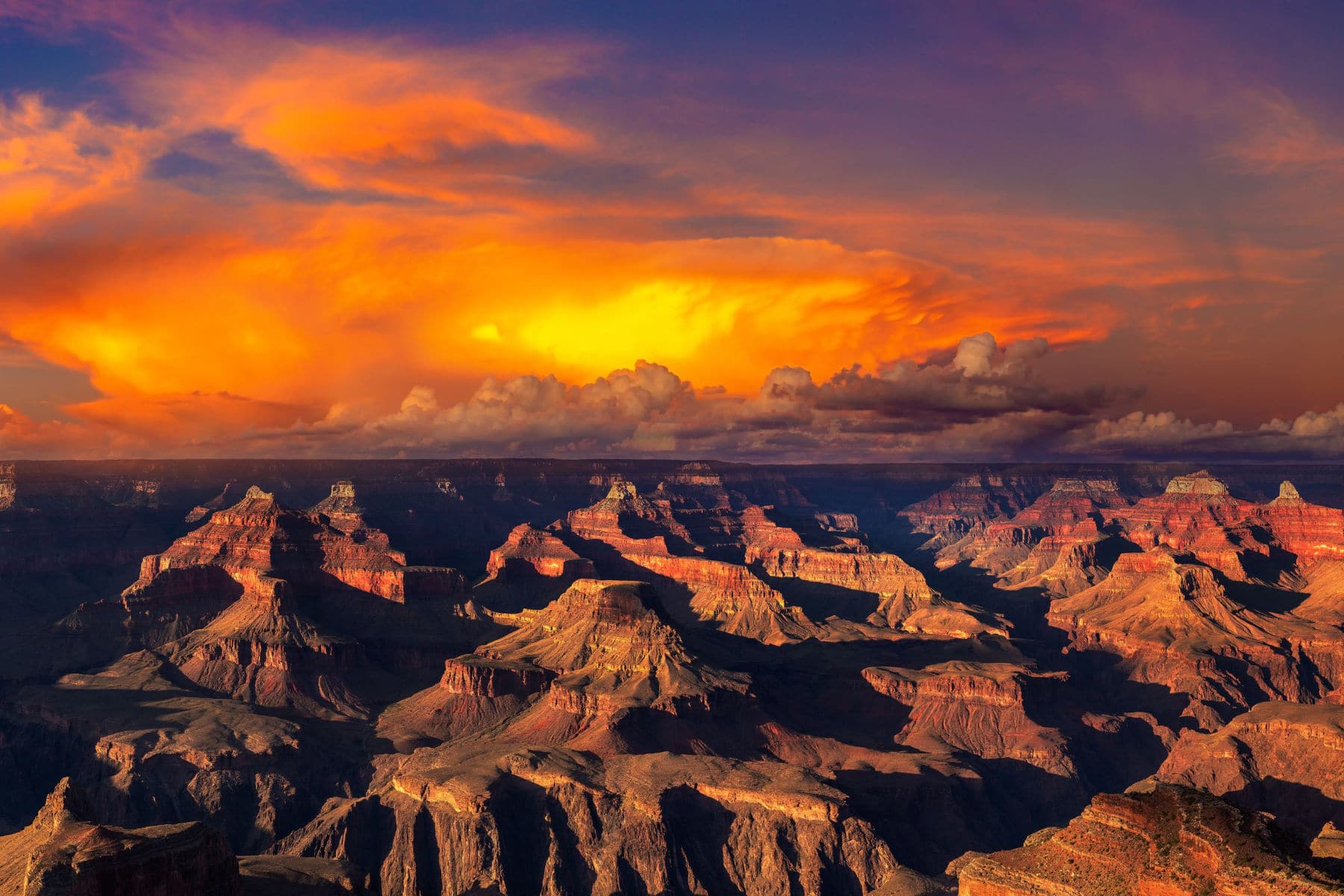
List Of Historic Sites In Arizona
- Grand Canyon
- Casa Grande Ruins National Monument
- Coronado National Memorial
- Fort Bowie National Historic Site
- Navajo National Monument
- Old Spanish National Historic Trail
- Tonto National Monument
- Tumacácori National Historical Park
- Hubbell Trading Post National Historic Site Monument
- Wupatki National Monument
- Tombstone Historical District
- Pioneer Living History Museum
- San Xavier del Bac
- Scottsdale’s Museum of the West
- Lowell Observatory
Why Trust Us About Historic Sites In Arizona?
We’re Jim Pattiz and Will Pattiz, collectively known as the Pattiz Brothers and we absolutely LOVE the national parks.
You should probably know that we don’t just make this stuff up out of thin air. We’ve spent our entire adult lives exploring and filming America’s national parks and public lands.
We’ve worked with the National Park Service, the Department of Interior, USDA, U.S. Forest Service, and more for years creating films on important places and issues. Our work has been featured in leading publications all over the world and even some people outside of our immediate family call us experts on the national parks.
And, in 2018, our father – having spent a lifetime teaching history – joined us so that he could help us to tell the stories behind these amazing places.
Meet The Parks Brothers
We Hope You’ll Follow Our Journey

Our goal here at More Than Just Parks is to share the beauty of America’s national parks and public lands through stunning short films in an effort to get Americans and the world to see the true value in land conservation.
We hope you’ll follow our journey through the parks and help us to keep them the incredible places that they are. If you’re interested in joining the adventure then sign up below!
Related Links
What Is A National Park? To learn more about the difference between the various National Park Service designations check out our article that explains everything!
Arizona National Parks: These EPIC 24 Arizona National Parks Will Blow Your Mind



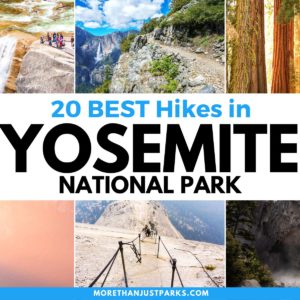

Leave a Reply